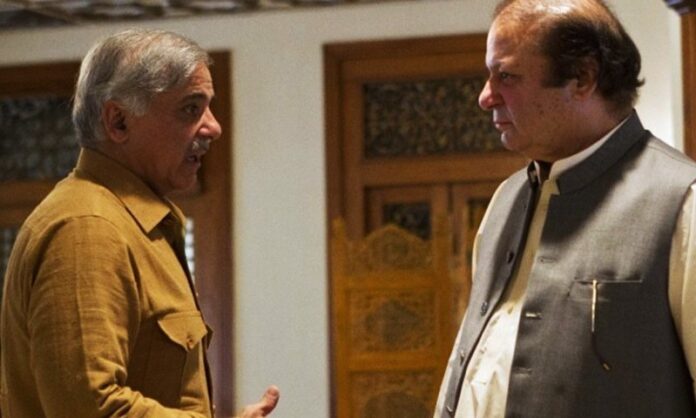The rise of Ittefaq and of the Corruption Foundry has been synonymous. Mian Muhammad Sharif of Gawalmandi started with a small graphite cruicible furnace on Fleming Road not too far away from his small residence, to produce manhole covers after melting scrap.
The product was then supplied to the Lahore Municipal Corporation (LMC) with a clandestine arrangement to buy back the stolen covers. When the menace got out of control with several missing lids, it was decided to replace them with cement covers. Mian Sharif firmly believed that every person had a price, pay and get your job done. It was termed; Muk Muka (Wheeling-Dealing).
Together with his six brothers, he worked both smart and hard. The small Ittefaq Foundry, as it was called then, moved to the Industrial Area of Kot Lakhpat during the 1960s. It was the dictator’s misguided policy of industrialization. Mian Sharif managed to get two plots, one was used as a workplace while on the other he managed to get an NOC to build seven mansions, one for each brother.
Compared to the professionally run BECO (Batala Engineering Company) next door, his place was primitive. Cow dung was used for Mould Making, with very poor labour practises. In the 1970s, both Ittefaq and BECO were nationalized and renamed LEFO (Lahore Engineerind and Foundry) and PECO (Pakistan Engineering Company). Zia-ul-Haq, the usurper and tormentor of Pakistan, returned LEFO to its original owners free and clear with no liabilities while the same offer was denied to the brilliant engineer C.M Latif of BECO, who refused to carry the debt. After coming into the corridors of power M5an Sharif created the ‘ Sharif Group ‘, leaving his brothers and the ‘ Ittefaq Group ‘ behind. It was a new era of moving from Metal to Money Foundry by misusing state power.
A foundry is a place where material is shaped after melting. As a Materials Engineer, I have been exposed to two foundries (Metal, Silicon). In the metal foundry, scrap is melted in various furnaces and then poured into moulds to obtain the desired shape. Silicon is produced from silica sand which is melted in a high flux cell and then grown around a seed to obtain the desired crystal orientation of the material. While melting metals is ancient, silicon gained prominence with the development of the semiconductor industry.
The foundry from where it all started ended with ‘corruption’, what goes around comes around. While nations are built through professionally run metals and silicon foundries, this ‘corruption foundry’ has the potential to undo the Islamic Republic of Pakistan that was created and built with great sacrifice by the founding fathers under the dedicated leadership of Quaid-e-Azam Muhammad Ali Jinnah
While Ittefaq Foundry was primitive, Pakistan was the first country in Asia to produce silicon from local sands in the 1970s. The National Institute of Silicon Technology (NIST) was established to develop the much needed electronic industry. Zia together with the Shari’s started the degenerative process in the country which has continued unabated todate. While the Sharifs and their foundry business multiplied, the rest were left behind to rot. Despite a glorious start through NIST and NIE (National Institute of Electronics) to move into the hi-tech arena, the land of the pure was pushed towards the formation of ‘Corruption Foundry’ through experienced and corrupt- to-the-core foundrymen of Gawalmandi.
While Ittefaq Foundry moved from Fleming Road to the Industrial Area of Kot Lakhpat in stages, the Corruption Foundry moved fast all over the land of the pure through major inroads into national institutions by the Foundrymen who had managed to come to the helm with the help of the establishment of that time. Moulding and shaping is the forte of foundrymen, which was used effectively to introduce corruption at all levels. Those who resisted were punished, while the ones who joined the gang flourished. Mukmuka‘ became a way of life. Rules, regulations, merit were all compromised at the altar of loyalty.
Benazir as leader of Bhutto’s Progressive Party resisted this invasion but then fell into the trap under the influence of her husband Asif Zardari of Bambino Cinema Karachi, who was known for selling show tickets in the black market. With Benazir out of the way in 2007, the Foundrymen and the Cinemamen combined together to corrupt the core of the nation from which recovery seems to be an uphill task.
Pakistan Tehreek-e-Insaf (PTI) under the leadership of Imran Khan has decided to fight this menace but so far with limited success. The ‘Corruption Foundry’ is well entrenched and its influence runs deep both in the bureaucracy and the judiciary. The prevalent rule saw that the Ittefaq Foundry was shut down and its land sold after plotting. It has been alleged that the sale proceeds of the extended family property have not reached all the heirs.
The foundry from where it all started ended with ‘corruption’, what goes around comes around. While nations are built through professionally run metals and silicon foundries, this ‘corruption foundry has the potential to undo the Islamic Republic of Pakistan that was created and built with great sacrifice by the founding fathers under the dedicated leadership of Quaid-e-Azam Muhammad Ali Jinnah.























